HOME
GALLERIES
Haiti Streets
I spent four years in Haiti, the first three working on a U.S. Government project called the Haiti Stabilization Initiative (HSI). That got me on the streets of difficult neighborhoods every week, which was amazing, and uncommon for an official assistance worker. Some of these pictures come from that, and some from getting out on my own.

Le Bon Combat The name (above the windshield, in French) of this Grand Rue bus is "The Good Fight". I captured it on the fly, shooting out of the window of my car one Saturday morning. Most intercity public transport in Haiti is provided by "tap-tap", a compact pick up truck with facing benches and a steel canopy built into the bed, with passengers entering and leaving over the tailgate. Those little vehicles can be every bit as decorated as this bus, depending on the level of pride and the budget of the owner. These bigger handmade buses ply a couple of the larger, longer, straighter streets in Port-au-Prince. This street is officially Boulevard Jean-Jacques Dessalines but it's universally known as Grand Rue, or "Big Street". It is the big, defining, thoroughfare of the old downtown, but the stylish center has moved away up the hill to Pétionville. These buses are built of wood on medium sized Asian truck chassis, covered with aluminum lithography sheets nailed to the wood, then painted and decorated to the taste and desires of the owner. A big print of this photo was part of my installation at the first Ghetto Biennale in 2009. It was a bit of a hit with the local audience because they recognized their own neighborhood, the bus, and the man standing in the street talking to the driver.
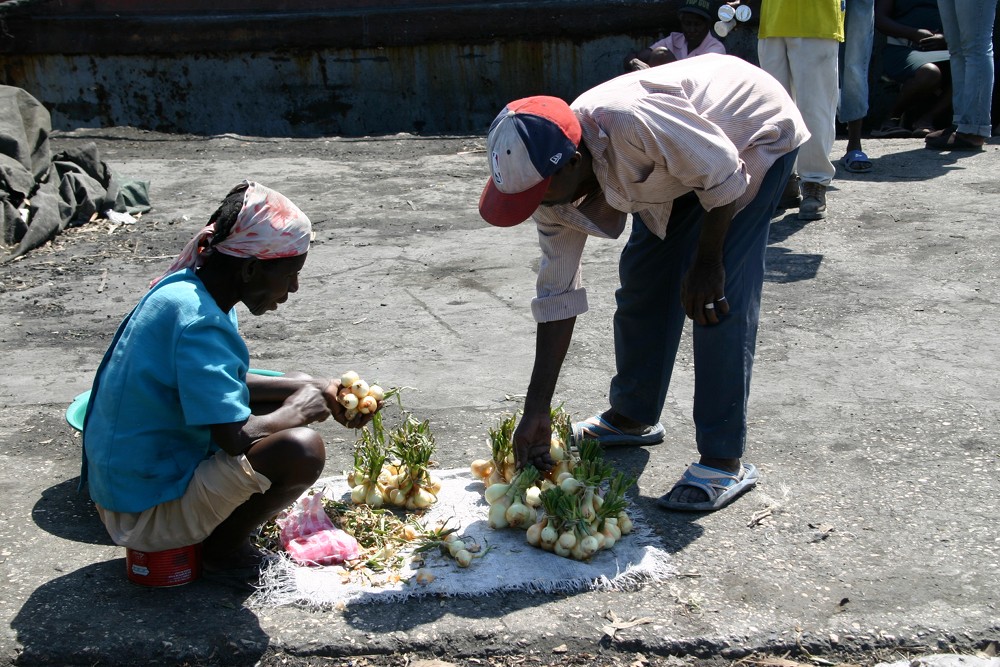
The Onion Seller/La Condition Haïtienne At Wharf Jérémie, at the southernmost point of Cité Soleil. At the time it was a working wharf, and the central Port-au-Prince end of my project's impact area. It wasn't a day for the loading of the ferry to Jérémie, so the street sellers like this one colonized spots on the concrete wharf. I'm still impressed that she's making a living selling her very small stock of onions. I also hung this one at the first Ghetto Biennale, which is why it has a second, French, name. One of the young Haitians who were helping me hang the installation looked at it and said "La Condition Haïtienne" with a mixture of recognition and sorrow.
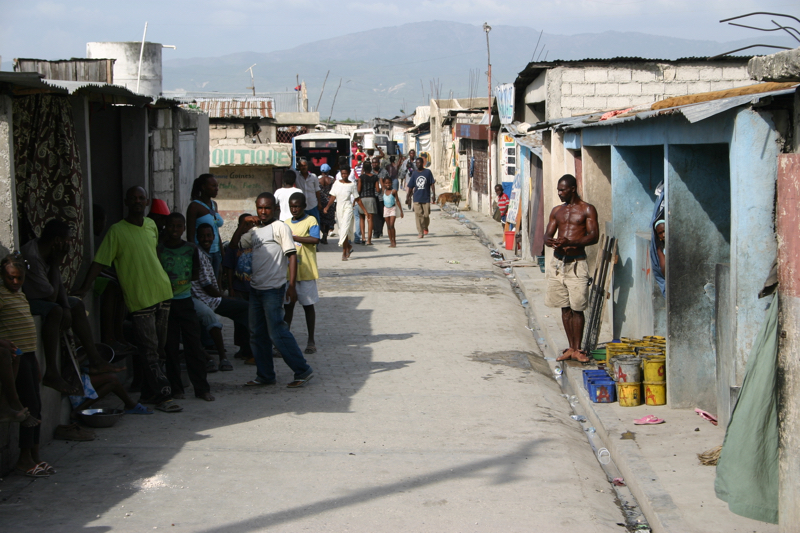
Wharf Jérémie Street In the Wharf Jérémie quarter, on the way to the wharf itself. My project paved a number of the little streets running off the main road leading to Wharf Jérémie. This is one of them. A moment of daily life. Many Haitians spend most of their time in the open because their homes are very small, and the weather allows outdoor activity. The beautiful man in the door is bathing, using the green pan of water at his feet. Water is a precious commodity, generally purchased by the bucket, so bathing is a careful, parsimonious process.
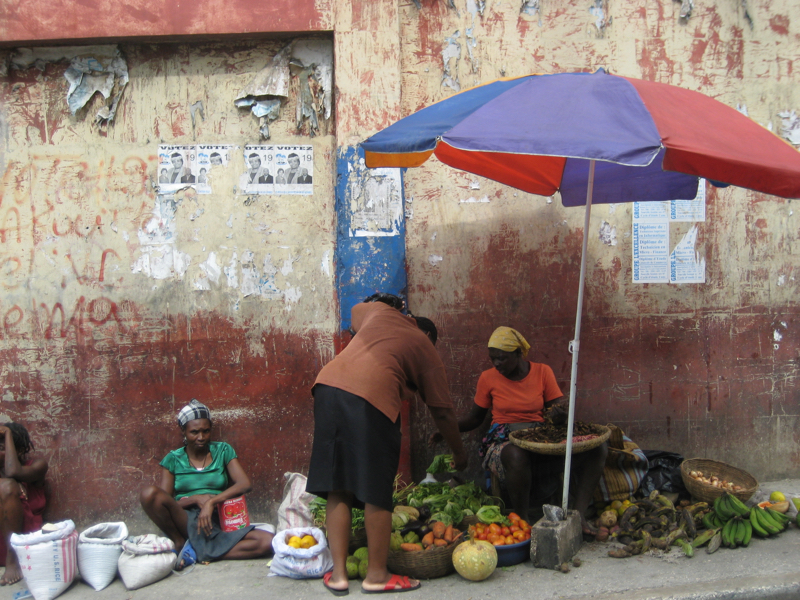
Delmas Marchande A settled street vendor. "Marchande" is the French feminine form of the word "merchant" and if you use it in Haiti you're referring to this kind of woman, scrappy, shrewd, tough, and huge part of the national economy. I drove past this vendor several times a month during my years living in Haiti, and she was always there in the midst of a settled group of vendors on the corner of Route de Delmas. They may not have owned their space on the sidewalk, but they possessed it.
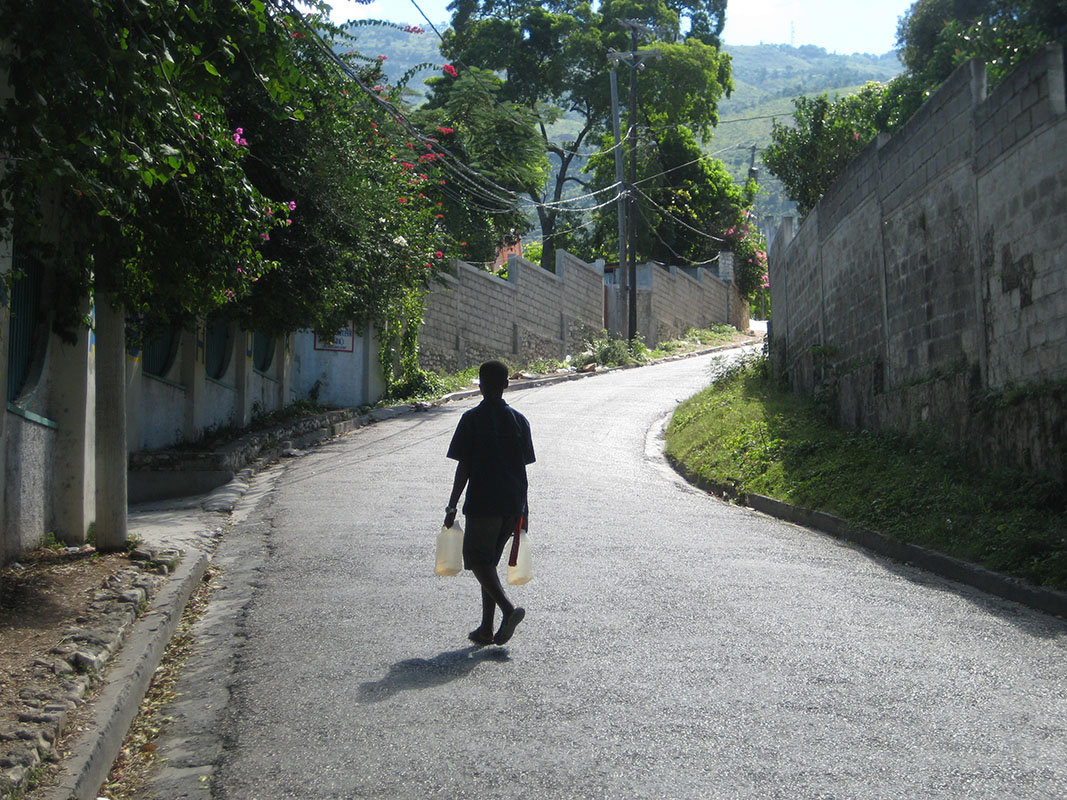
Boy Carrying Water My neighborhood, Pacot, wealthy, yet this boy still had to carry jugs of water home for his family.
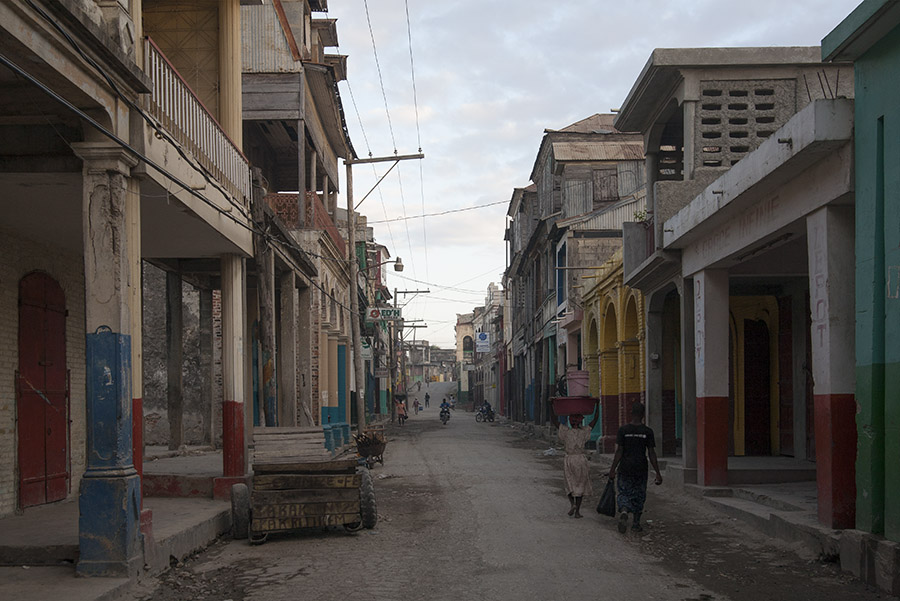
Colonnaded Street, Jérémie Haiti's City of Poets. Jérémie is a city on the northern side of the southern claw of Haiti, wonderfully isolated by terrible roads and dubious ferry service. In pre-modern Haiti the lack of good roads mattered much less, since most commerce was water based and ships would load high value tropical products like cotton, sugar, and indigo at the smaller ports for direct shipment to Europe. A number of Haitian writers and intellectuals were born in Jérémie, hence "The City of Poets". It's best known as the birthplace of a soldier, however, Thomas-Alexandre Dumas, the father of Alexander Dumas of The Three Musketeers and The Count of Monte Cristo. This picture was taken in 2009. 2016's Hurricane Matthew is reported to have done the town enormous damage.
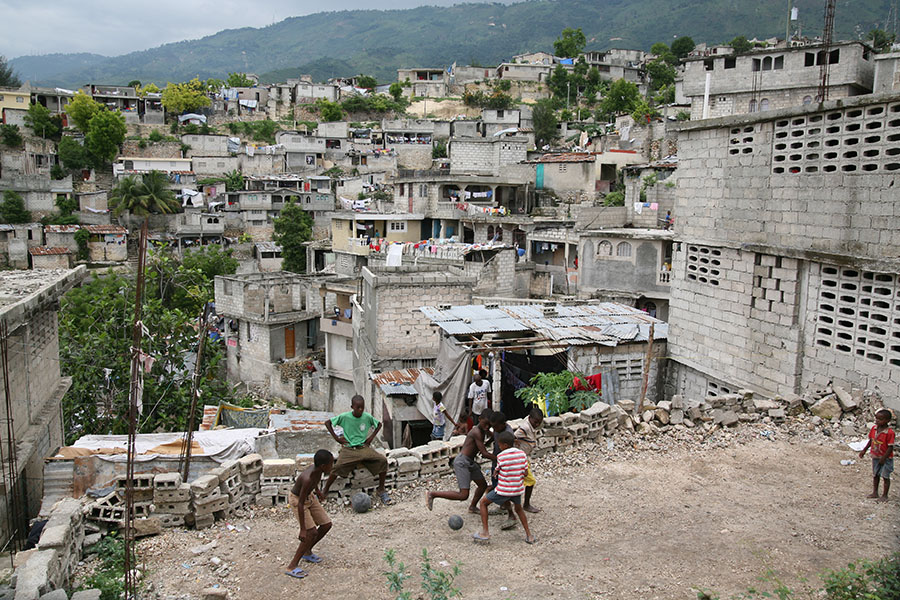
Martissant Football Game My other favorite difficult neighborhood in metropolitan Port-au-Prince. The second phase of the Haiti Stabilization Initiative rolled out in Martissant, a tough district that ran up the hills overlooking downtown from the southwest. Million dollar views in a very poor place that most middle class Haitians would consider a no-go zone. The game is soccer to the Americans, of course. Given a ball and a vacant lot kids will make it work.
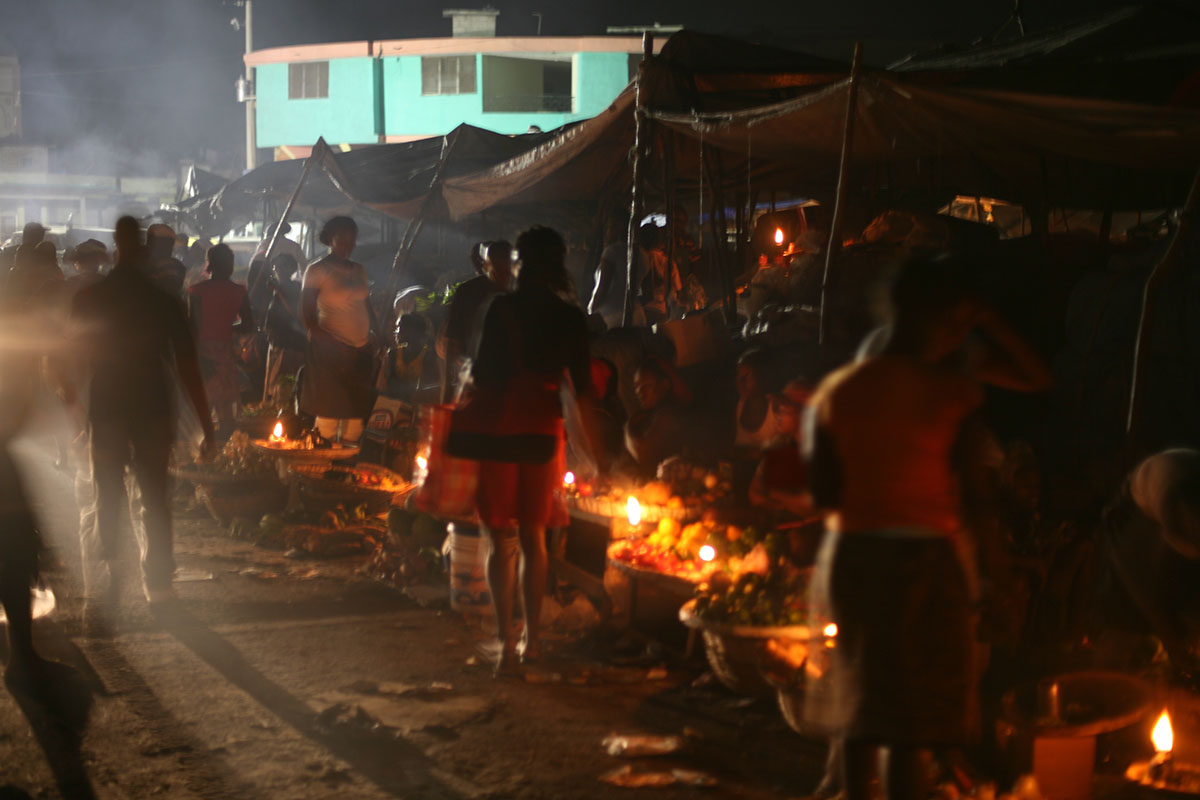
Night Market, Pétionville During the day this is just a street... The vendors start setting up at dusk. The square in the background is also part of the night market, and illuminated by floodlights on a trailered generator. And, of course, even at night the street is still a street, and cars nose through, slowly.
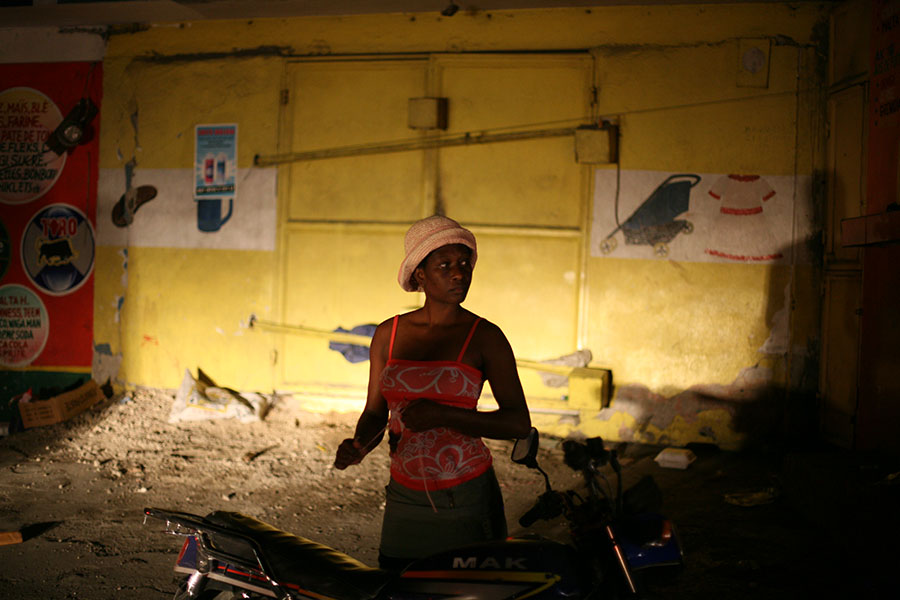
Route de Freres At a stop light, the same night that I shot the Night Market. My friend Neil was driving, and I took this picture through the open window of the passenger seat of my car. I don't know her story.
GALLERIES








